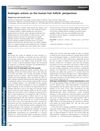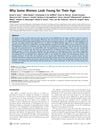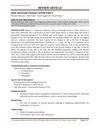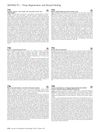The Neuroscience of Age Perception
September 2016
in “
Springer eBooks
”
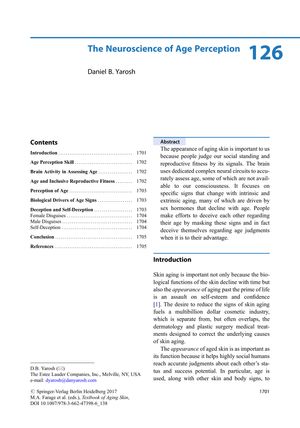
TLDR Humans can accurately guess age from faces, with women being slightly better at it, and age perception is linked to evolutionary factors.
The document from 2016 explores how humans are adept at determining age from facial features, with a 95% accuracy rate when viewing faces and over 60% when only skin is visible. Women generally have a slightly higher accuracy than men, and men often perceive women as younger than their actual age. The brain uses specific areas, like the fusiform face area, for recognizing faces and assessing age. Age perception is tied to reproductive fitness, with younger appearances being more attractive. This attractiveness is signaled by various facial features that change with age, such as eye and lip size, skin tone evenness, and hair color contrast, which are affected by declining sex hormones like testosterone and estrogen. People use methods like makeup to alter their perceived age, aiming to enhance attractiveness or convey maturity. The document emphasizes that age perception is a critical evolutionary tool for identifying potential allies, rivals, and mates, and is an ingrained human behavior rather than a mere cultural trend.
